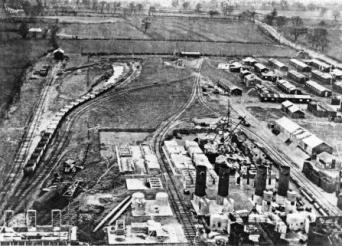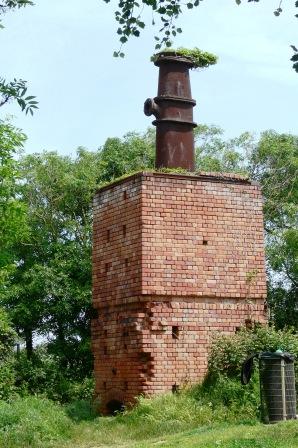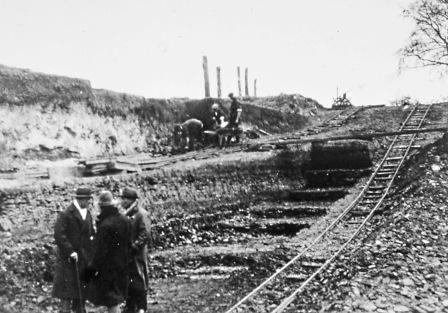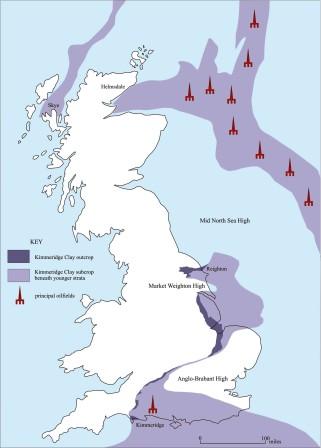Oil Shales
click on images for additional information

Prior to the availability of large quantities of underground oil in the late 19th century, most of the oil for lubrication, heating and lighting in the UK came from the distillation of organic-rich rocks, mostly Carboniferous cannel coals and oil shales worked in Scotland. The present-day need to to find alternative sources of hydrocarbons makes them and the oil shales in the Jurassic Lias, Oxford Clay and Kimmeridge Clay worth exploring at depth as possible sources of shale gas.
Mining Carboniferous oil-shale by candle light
in the Midland Valley of Scotland in
the 1920s
Scottish oil shales formerly made an important contribution to UK fuel needs.
Kimmeridge oil-shale burns with an acrid smoke: don’t try this at home.
The oil shales in the Kimmeridge Clay are the principal oil-source rock in the North Sea.
Abandoned brick-built kiln designed to retort Lower Jurassic (Lias Group) oil shales that crop out in the nearby cliffs, Lilstock, Somerset.
English Oilfield’s Ltd managers inspecting the pit in the Kimmeridge Clay that was to supply the oil shales for the retorts at Setchey c. 1920.
Kimmeridge Clay oil-shales yield a heavy shale oil rich in nitrogen, sulphur and Oxygen (NSO) compounds that need extensive refining.
When retorted at 450° to 500° C, oil-shales produce large volumes of
red mudstone waste that can contain potentially harmful organic residues
Oil-shale retorts under construction, Setchey, Norfolk c. 1920.
References
Gallois, R. W. 1976. Coccolith blooms in the Kimmeridge Clay and the origin of North Sea Oil. Nature, Vol. 259, 473-475.
Gallois, R. W. 1978. What price oil shales? New Scientist, Vol. 77, 490-493.
Gallois, R. W. 1979. Oil shale resources in Great Britain. 2 vols. Institute of Geological Sciences for Department of Energy, London.
Gallois, R. W. 2000. The stratigraphy of the Kimmeridge Clay Formation (Upper Jurassic) in the RGGE Project boreholes at Swanworth Quarry and Metherhills, south Dorset. Proceedings of the Geologists' Association, Vol. 111, 265-280.
Brereton, N. R., Gallois, R. W. and Whittaker, A. 2001. Enhanced lithological description of some British mudrock sequences using geophysical wireline logs. Petroleum Geology, Vol. 7, 315-320.
Gallois, R. W. 2004. The Kimmeridge Clay: the most intensively studied formation in Britain.
Open University Geological Society Journal, Vol. 25, 33-38.
Weedon, G. P., Coe, A. L. and Gallois, R. W. 2004. Cyclostratigraphy, orbital tuning and inferred productivity for the type Kimmeridge Clay (late Jurassic), southern England. Journal of the Geological Society, London, Vol. 161, 655-666.
C RWG
O








